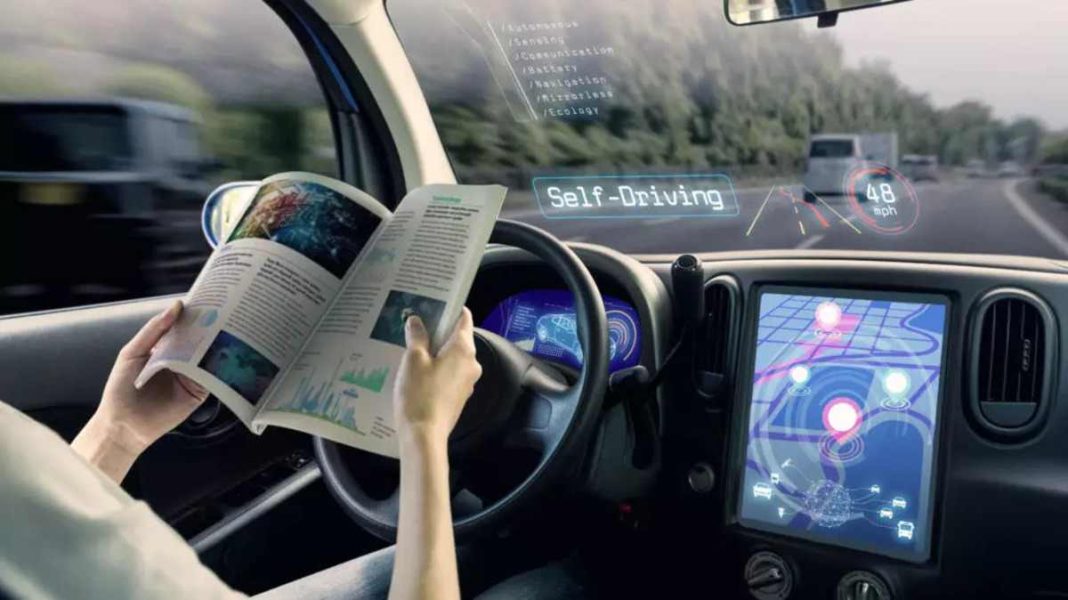As traffic congestion and population in the largest cities of the world continue to flare up, novel features in automobiles are becoming a go-to for researchers and manufacturers in this field. With modern-day utilities like artificial intelligence (AI) and the Internet of Things (IoT) gradually gaining fame in the tech industry, a lot of developments are about to be witnessed. Autonomous cars are surely one of those that are in line to make it big in the near future. How far along is self-driving technology? Let’s read more to find out:
What Exactly Are Self-Driving Cars?
A self-driving vehicle, or autonomous vehicle (AV), can be a car or truck that performs without human input. A human driver or passenger is not required to take control of the vehicle. It can perceive its environment and make automatic decisions based on its programming.
So let’s begin with the fact that the primordial idea of a self-driving car floated during the 1930s. But that idea was primarily a depiction in popular science fiction. Although the first prototypes circulated around the 1960s, later developments date back to the post-2000s period, when a bunch of them were test-driven. Those automobiles followed traffic rules, made clear-cut U-turns, and avoided any obstacles in their way. That is when they showed potential for serious considerations in the future.
How Do Self-Driving Vehicles Work?
A combination of technologies comes together to build the entire ecosystem that these vehicles fully rely upon. That can be a variety of high-powered sensors, high-resolution cameras, radars, light detection and ranging (LIDAR), navigation systems, and a whole set of coded data and instructions using machine learning models in real-time for effective performance.
According to the Society of Automotive Engineers (SAE), technically, automation has six levels ranging from 0 to 5. Level 0 means “zero autonomy,” where a driver has to operate the vehicle and be responsible for driving it. At level 1, certain features like lane-keeping assistance facilities are available. Level 2 is slightly more updated, with two or more features, such as steering and accelerating at once, automatically possible. But even at level 2, the driver has to be physically present and handle most of the operations. Level 3 will have partial automation, where the car is capable of self-driving only a short distance. The next level has most of the desired features of automation with minimal human interventions, but only within the scope of some restrictions, like geofenced areas. The highest level, 5, is all about full automation. A physical steering wheel may not even be present, and the vehicle can readily and effectively drive itself under all conditions.
Pros
Globally, around 1.5 million people die due to road accidents every year. These accidents occur due to common human errors like wrong judgments, lack of experience in driving, alcoholism, etc. Automatic cars can definitely eradicate the possibility of human mistakes. They can emerge as life-saving technology for millions of commuters around the world.
Another advantage to be talked about is the increased accessibility to the vulnerable sections of society, like senior citizens, people with disabilities, and children, as door-to-door transportation would be possible.
Cars could efficiently establish communication with other vehicles on the road and take different courses and paths, thus leading to lower congestion and traffic jams. In a recent report released by TomTom Traffic Index, it was discovered that the busiest cities in the world, like London in the UK and Bengaluru in India, have the slowest moving traffic. Self-driving cars could bring improvements on that front in the future.
As the traffic congestion lowers, there might be a positive development on the environmental front too. With a reduced risk of collision, lighter-weighted vehicles could be deployed on roads. If electric vehicles (EVs) are made driverless, then almost 95% of carbon dioxide emissions could be reduced per mile.
Challenges
One of the negative aspects of self-driving cars being rolled out in the future is their direct impact on job loss. This is in line with the controversy of having an automated world, which will require less and less manual work. Millions of cab drivers around the globe will become unemployed. Can the world afford such a catastrophe?
Secondly, we cannot rule out the probability of automated devices shutting down. Of course, humans are not without errors, but so are the devices and gadgets they create, aren’t they?
One cannot miss the exorbitant cost of the development of this technology with both the hardware and software available at the current time. Only the elite class of developed countries shall be able to afford such luxuries.
Overall
There is a huge amount of uncertainty regarding developing this technology at a massive scale due to its capability of revolutionizing the automobile as well as other overlapping industries, which means major shifts from automakers to policymakers have to be introduced.
Also, regulatory changes need to be discussed and framed on the basis of the laws of a gradually automated world.
Although the technology is presently only under several tests and scrutiny, self-driving cars have amazing potential for absolutely transforming our transport and commute experience.


